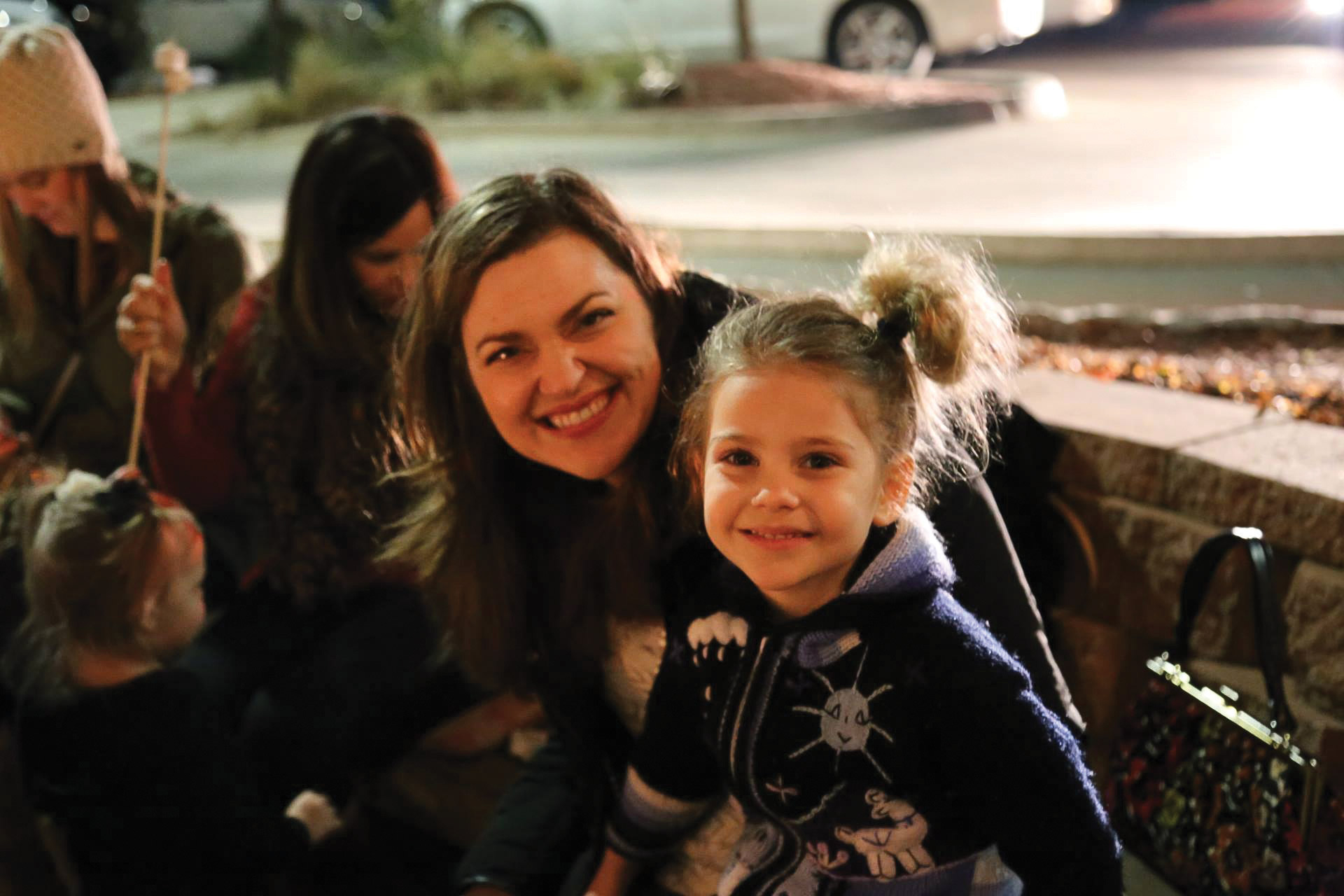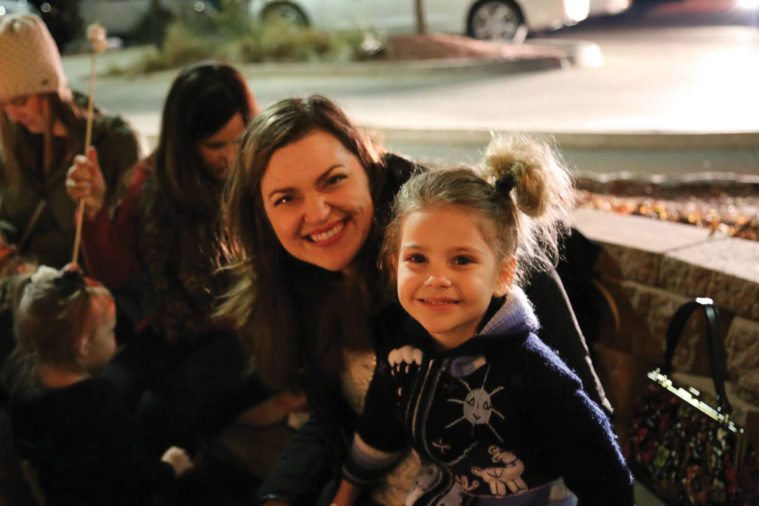
Going It Alone
More than 40 percent of Texas families living in poverty are single-mother households.

A version of this story ran in the April 2017 issue.

My 5-year-old daughter sits at the table, rocking back and forth in a rickety chair I should have replaced years ago. Peas and other discarded vegetables collect on the floor below her dangling bare feet.
“OK, three bites of peas and you can have dessert,” I say.
“One bite and two pieces of chocolate,” she argues.
I cave. “Fine. One BIG bite of peas.”
She spills most of her spoonful, but I’m past the point of caring. There’s a stack of bills on the table across from the peas, a stack of papers to grade in my bedroom and a stack of laundry so big it’s beginning to colonize my office. And my wine glass is empty.
My daughter steps on (not over) those peas as she races toward the candy bowl in the kitchen.
“You can watch one show on Netflix before bed,” I say. “But JUST one.”
I pour more red wine — a lot more. And look across the table where I’m sitting. Not so long ago, there was a person sitting across from me. We’d drink wine together while our daughter, Amelia, watched Daniel Tiger’s Neighborhood. We’d talk about our day, sharing conversations we’d had with coworkers and texts we’d exchanged with friends. Then we’d divvy up that night’s list of chores: dishes, laundry, bath time, making Amelia’s lunch for tomorrow and putting Amelia to bed, which, as all parents know, is one of the most arduous processes in existence. Steps include but are not limited to reading books, back rubs, laying together, crying fits, arguments and one more kiss, one more hug, 10 more times. Finally, maybe an hour later, if you’re lucky, comes acceptance and sleep. That is, until the child wakes in the middle of the night, at which point any of the steps may be repeated.
Now, as a recent divorcee, all of these chores, tasks and crying fits are mine alone. Welcome to the world of single parenting.
I hate Sundays. They remind me of families — the nuclear kind — mother, father and child on their merry way to church, hand-in-hand, the mother’s hair perfectly coifed.
Though many single parents feel alone, the numbers tell a different story. The share of single-parent households nationwide has more than tripled since 1960. In Texas, 36 percent of kids live in single-parent families. In Tarrant County, where I live, there are now nearly 59,000 single mother-headed households with children under the age of 18.
But where are these kindred spirits? Well, they’re working. Hard. And they’re still not making nearly enough money, because many women have to leave paid work to care for children and other family members or must arrange working hours around limited child care. The median income for a woman-headed household with an average of two kids in Tarrant County is about $34,500. But the living wage in Tarrant County to support one adult and two kids adds up to a gross annual income of $52,400. Both those numbers fall well short of $85,500, which is the median income of married households.
It’s been a year and a half since the ink dried on my divorce decree, but I still think about how much money we would have as a household if I were still married. Oh, buckets of money — enough to buy my beloved crab cakes and red wine from Central Market every weekend. Now I wouldn’t even consider such frivolous spending.
Single-parent families in Texas face extra challenges. Our state has one of the worst child poverty rates in the United States, with nearly one in four kids living below the poverty line. And 42 percent of Texas families living in poverty are single-mother households.
“Costs are going up, and few families can cover the average costs of housing, transportation, food and health care on one income,” says Frances Deviney, associate director of the Center for Public Policy Priorities, a liberal think tank. “Given that we have few services for adults in Texas, being a single parent and low-income can be a stressful double whammy.”
Even though I’m a single working mother, I am privileged; though I struggle, I’m not living in poverty. And poverty, which is so prevalent among single mothers, is one of the biggest predictors of mental health issues, explains Emily Spence-Almaguer, a public health expert at the University of North Texas Health Science Center.
“If you think about Maslow’s hierarchy of needs … for someone living in poverty, those needs are always under threat,” says Spence-Almaguer. That struggle for survival is profoundly stressful.
Cindy Casey, program manager for Fort Worth’s Catholic Charities Padua Poverty Pilot, says nearly half of the client households in the pilot program have at least one family member suffering from mental illness — and many of those households are headed up by single mothers.
“With moms, it’s so hard what they are going through,” Casey says. “When you don’t know how you’re going to feed your child or how your health-care goals are going to be met, that’s a whole other level of stress.”
Casey believes that living in a constant cycle of poverty is traumatizing. Amy Carr, a licensed therapist at The Parenting Center in Fort Worth, agrees. She says the mental stress that single parents face can lead to anxiety, burnout and depression. “When parents are stressed out all the time, the kids grow up in that environment,” Carr says.
When I’m not too tired at night or my daughter hasn’t fought me on getting on her “pi-jammies,” as she so sweetly calls them, I read her a book in bed. Our best conversations happen between the pages of The Princess and the Presents or Goodnight Moon. As I read one night a couple of months ago, she offered me one of her prized “lovies” so I wouldn’t be “sad and lonely” when she went to Daddy’s house the next day.
“Lovie girl,” I said, “Don’t worry about me. And I’m never lonely because I have you, and you’re the best thing I’ve ever done.”
She looked into my eyes with those long eyelashes inherited from her daddy and silently handed me the lovie, a small Anna doll from Frozen.
Amelia, sporting gold ringlets and a nighttime diaper, could sense my sadness and loneliness despite my best efforts to hide it. I felt like a failure.
The key for single parents, especially those living in poverty, is a good social support system that can pick up the slack when kids get sick or a parent has to work and the daycare is closed. “Single parents with support have much lower rates of depression,” Spence-Almaguer says.
That’s exactly what I realized during my divorce: I needed more people. I needed other single parents. I needed friends with flexibility to come over after Amelia was asleep. But what I really wanted was a boyfriend, because it was that person sitting across the table from me that I missed the most. It was my husband telling me, “It’s going to be OK.”
Carr says that without a support system and backup caregivers, single parents don’t have the time and freedom it takes to form relationships that lead to romantic connections and life partners. That perpetuates the cycle and can lead to depression.
“The loneliness and unintentional separation from the community is the hardest part of being a single parent,” Carr says. “It’s the social isolation.”
I hate Sundays. They remind me of families — the nuclear kind — mother, father and child on their merry way to church, hand-in-hand, the mother’s hair perfectly coifed. I’ve worked hard to create a social network where I live in the Near Southside neighborhood of Fort Worth, so that when Sundays come, I’m ready. Dinner parties. Play dates. Ice cream at Melt on Magnolia Avenue. And church with my daughter, walking hand-in-hand, my hair thrown back in a bun and a few ketchup stains on her dress.

This article appears in the April 2017 issue of the Texas Observer. Read more from the issue or become a member now to see our reporting before it’s published online.


